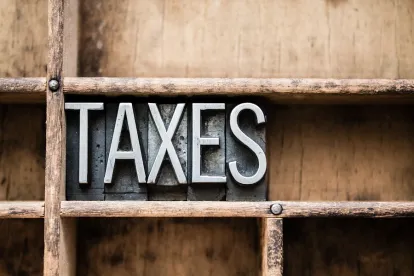We summarized last week the tax-exempt and tax-advantaged bond provisions of the Tax Cuts and Jobs Act (the “Act”), as introduced and referred to the House Ways and Means Committee. As a reminder, these provisions, which came as a shock to state and local governments, 501(c)(3) organizations, and others involved with public finance, would eliminate the ability of state and local governmental units to issue: (1) tax-exempt qualified private activity bonds (including qualified 501(c)(3) bonds); (2) tax-exempt advance refunding bonds; (3) tax-exempt professional sports stadium bonds; and (4) tax credit bonds (regardless of whether the bondholder receives a tax credit or the issuer receives a direct payment subsidy in respect of the tax credit bond).
The foregoing provisions were included in the version of the Act that was approved today by the House Ways and Means Committee. With one notable exception – the prohibition on tax-exempt advance refundings — these provisions, and indeed anytax-exempt bond provisions, are absent from the Senate Finance Committee Chairman’s Mark of the Act, which was also released today. More analysis and speculation after the jump.
Unlike the House’s version of the Act, the Senate’s version makes no changes to the existing provisions of the Internal Revenue Code that permit the issuance of (i) tax-exempt qualified private activity bonds, (ii) tax-exempt bonds that finance stadiums in which professional sports teams play, and (iii) tax credit bonds. Moreover, the Senate version of the Act, like the House version, would eliminate the alternative minimum tax for tax years that begin after December 31, 2017. This would be a further boon for qualified private activity bonds. With the exception of qualified 501(c)(3) bonds, low-income housing bonds, and mortgage bonds, the interest paid on qualified private activity bonds is subject to the AMT. If the Senate version of the Act is enacted, the extra cost imposed on all of the other varieties of qualified private activity bonds in the form of AMT will disappear.
So far, the Senate version of the Act is, unlike the House version, good news for sound public finance tax policy. As Rocky Balboa reminded us, however, the world isn’t all sunshine and rainbows. The Senate version of the Act mirrors the provisions of the House version that would eliminate the issuance of tax-exempt advance refunding bonds that are issued after December 31, 2017 (although with a revenue estimate from this elimination of $16.8BB from 2018 – 2027, compared to the revenue estimate from the House’s elimination of tax-exempt advance refunding bonds of $17.3BB over this same period).
The Senate’s affirmation of the House’s plan to jettison tax-exempt advance refunding bonds tempers the enthusiasm with which the tax-advantaged bond provisions (or, more accurately, the lack thereof) in the Senate version of the Act can be greeted. The inability to issue tax-exempt advance refunding bonds imposes real costs on state and local governments without any meaningful benefit to the federal government when compared to other sources of potential revenue to pay for the reductions in the corporate and individual income tax rates. At this point, one should expect that if any version of the Act is enacted into law, tax-exempt advance refunding bonds will no longer be with us. The disconcerting news in respect of advance refundings notwithstanding, the Senate version of the Act significantly improves the House’s treatment of public finance.
It is worth noting that the House version of the Act does not satisfy the Byrd Rule, because it would result in annual deficits more than 10 years after the enactment of the Act and would therefore not allow the Senate to pass the Act pursuant to the budgetary reconciliation process. This is important because budgetary reconciliation would allow the Senate to pass the Act by a simple majority (this includes a tie-breaking vote by Vice President Pence), while a process outside of reconciliation would require at least 60 votes in the Senate for the Act to pass. If you have followed U.S. politics since November 8, 2016, you know that reconciliation is the only means by which the Senate can pass the Act. In light of this realpolitik, the very real possibility (perhaps probability) exists that the Senate will make it clear to the House that its version of the Act must be adopted, rather than allowing the Act to be negotiated by a conference committee. In such an event, tax-exempt and tax-advantaged bonds would emerge unscathed by the enactment of tax reform (aside from the mere flesh wounds that would arise from the elimination of tax-exempt advance refunding bonds and tax-exempt bonds being rendered a much less attractive investment at a 20% corporate income tax rate).
One final note. Absent further developments, particularly an extension of the effective date, the dueling treatment of private activity bonds in the House and Senate versions of the Act will make it very difficult to render an unqualified opinion that interest on a qualified private activity bond issued after December 31, 2017 is exempt from federal income tax. Please don’t importune your favorite public finance tax lawyer in the absence of such developments.
There will be more to come on the Act, so watch this space for developments regarding the effect on tax-exempt/tax-advantaged bonds.




 />i
/>i
